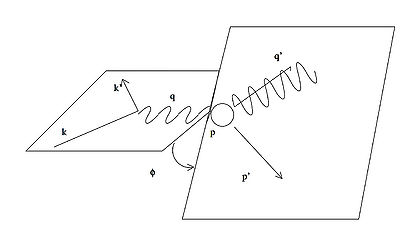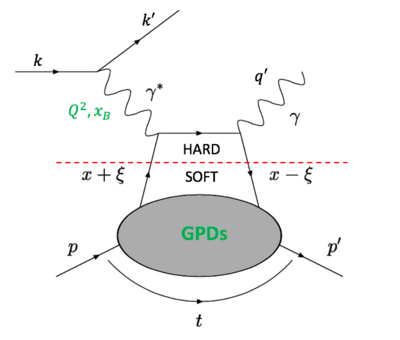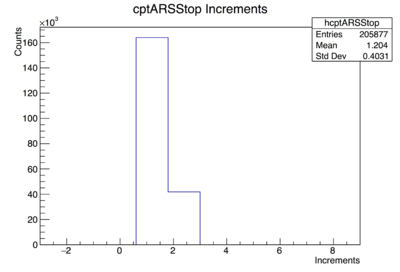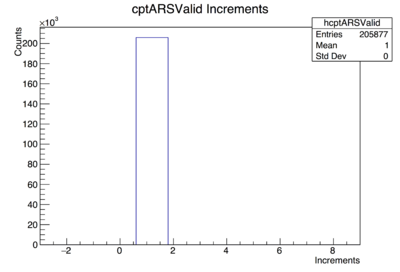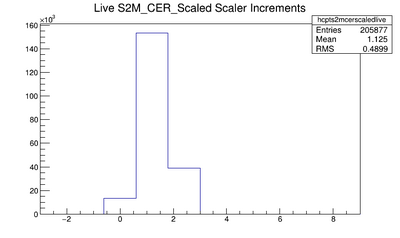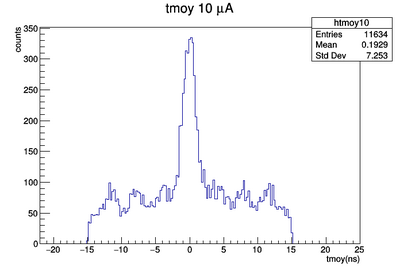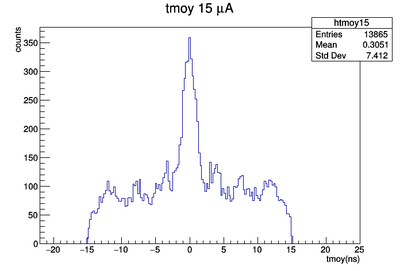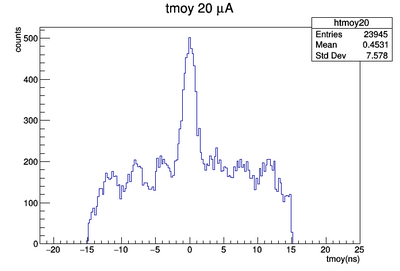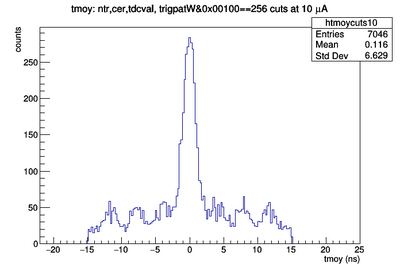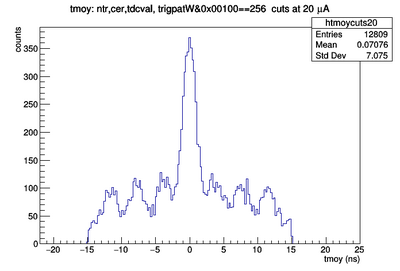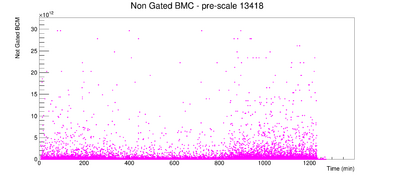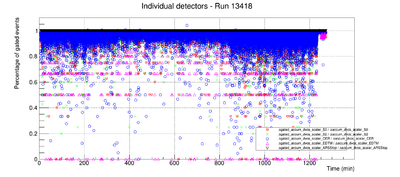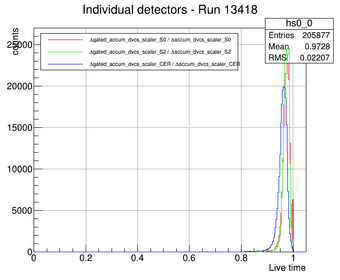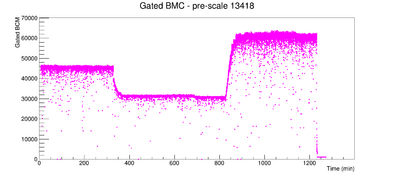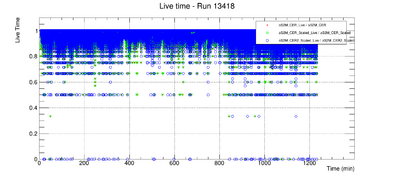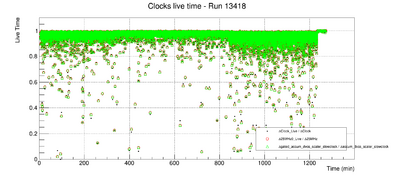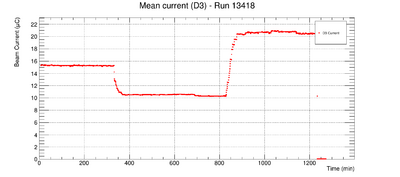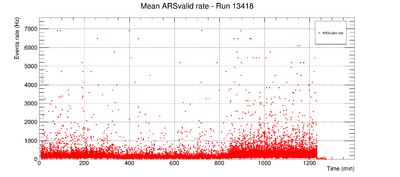Difference between revisions of "MainPage:Nuclear:DVCS-3"
| Line 55: | Line 55: | ||
Deeply Virtual Compton Scattering (DVCS)-3 was an experiment that ran from 2014-2016 in Hall A (E12-06-114) and is one of the first experiments of the JLab 12 GeV era. The method of DVCS is the cleanest way to access Generalized Parton Distributions (GPDs). More information can be found on the [https://hallaweb.jlab.org/wiki/index.php/DVCS3 DVCS-3 wiki page]. | Deeply Virtual Compton Scattering (DVCS)-3 was an experiment that ran from 2014-2016 in Hall A (E12-06-114) and is one of the first experiments of the JLab 12 GeV era. The method of DVCS is the cleanest way to access Generalized Parton Distributions (GPDs). More information can be found on the [https://hallaweb.jlab.org/wiki/index.php/DVCS3 DVCS-3 wiki page]. | ||
==DVCS Theory== | ==DVCS Theory== | ||
| + | |||
{| border="0" style="text-align:center;" width="100%" | {| border="0" style="text-align:center;" width="100%" | ||
| − | |||
|- | |- | ||
| valign="top"| [[File:alex_goodqual.jpg|thumb|center|400px|Angle phi defined in terms of the scattering leptonic plane and hadronic reaction plane.]] | | valign="top"| [[File:alex_goodqual.jpg|thumb|center|400px|Angle phi defined in terms of the scattering leptonic plane and hadronic reaction plane.]] | ||
| − | |||
| − | |||
| − | |||
|- | |- | ||
| valign="top"| [[File:DVCS_handbag_withkk.png|thumb|center|400px|DVCS Handbag diagram with incoming leptons k and k']] | | valign="top"| [[File:DVCS_handbag_withkk.png|thumb|center|400px|DVCS Handbag diagram with incoming leptons k and k']] | ||
Revision as of 21:18, 21 June 2018
| ⇐ Back to the Main_Page |
Current Progress on deadtime analysis for DVCS3
Past updates are here
- Main goal is to determine the livetime/deadtime correction factor (LTCF) which is used to correct the deadtime
- Take a trigger rate/live rate and normalize using the current and adjust to the prescale (so we can eventually apply to LTCF)
- To make sure the deadtime is correctly computed, the deadtime, current and prescale factors should be in agreement within 1%, especially for the range of rates in which the deadtime is linear.
- Currently analyzing run taken in April 2016, 13418 which was a dedicated run for the deadtime analysis, at three different currents (10, 15, 20 uA) using a liquid hydrogen target.
- There are other dedicated deadtime runs taken in February 2016 with a carbon target, 12471 to 12476 at a current of ~5 uA with different prescale factors. The LTCF applied to these rates were able to correct the deadtime to better than 1%.
- Current dependence issues
- 8/5/2017: There is a current dependence of live scalers when looking at dvcs events S2M and Cherenkov detectors, despite normalization using currents (to get rid of the dependence). This may be due to random coincidences between the two detectors...but still need to find out. More details here.
- ***Update (11/20/17) Paul suggested that ADC gate width scaling does not align with current dependence issue since DIS triggers are being used. Need to re-check method used to apply the "signal to background ratio" to the rates because something is wrong.
- ***Update (12/1/17)Paul and I agreed with our calculations but no explanation to the persistence of the current dependence for DVCS rates. He suggested to use DIS accidentals from the time coincidence spectra instead of the previously used DVCS to get the accidental-subtracted DVCS rates. Obtained this signal/total ratio from triggerPatternWord cut for DIS only (on the time spectra for each current), and applied to DVCS normalized rates but no improvement on removing current dependence.
- ***Update (1/8/18) Another suggestion was to look back at how the calorimeter and spectrometer data was analyzed after the waveform analysis (using the ana.C script). Nothing seems wrong. The variables were correctly added and no apparent mistakes in making the output trees (ntunew_kin48_4_13418_xxuA.root files).
- ***Update (1/9/18) Decided to add cuts and apply tracking, Cerenkov, TDC and triggerPatternWord cuts to get DIS accidental rates and "subtract" from DVCS normalized rates. Previously, I was just using the rates from the DIS triggerPatternWord. The additional cuts resulted in the current dependence decreasing by a factor of 2, and percent difference per 10 uA is ~6%. This is still preliminary..need to still make sure method of "subtraction" is correct, and using DIS signal/total ratio instead is the right way to go.
- ***Update (6/21/18)After understand the clustering analysis of the calorimeter, in addition to the collaborative efforts and suggestions (thank you to Carlos, Julie, Mongi, Alex etc.) I have successfully applied the DVCS signal/background ratios to the DVCS normalized rates, and was able to recover the rates to better than 1%.
Presentations and Reports
- Slides from DVCS collaboration meeting: deadtime_pres_1.26.2018
- 4/11/2018 Google sheets doc for kinematics of dvcs experiment (plus my own edits...work in progress, lots of things missing (ps, trig)) here
- Slides for NP meeting 1.10.2018: SFA slides_deadtime_progress_DVCS-3 1/10/2018
- Report on progress 1/8/2018: deadtime progress 1/8/2018
- Report on progress presented on 11/14/2017 for DVCS-3 weekly meeting: deadtime progress 11.14.2017
- Description: Presented on computations involving scaling of coincidence time window (80 ns) to get scaled DVCS normalized rates (to get rid of current dependence), which involved using the ARS peak time and ADC values.
- Comments: Carlos suggested checking equations for the scaled DVCS rates since the discrepancy went up from 5% to 8%. Need to confirm with Paul if correct equations.
- Slides presented on 9/26/2017 for DVCS-3 weekly meeting: deadtime progress 9.26.2017
- Description: Updates on random counting scalers- S2m&&Cer signals are NOT validated by ARS after forming trigger. More on this below; Computed signal/background ratio by sectioning out 4 ns window of coincidence peak and accidental region, and applied it to DVCS normalized rates.
- Comments: Need to scale time coincidence window to online trigger and apply to signal/background ratio. Check with Paul for exact value of this. Is this the gate width of 100 ns during the run? More on this here.
- Slides presented on 9/20/2017 for CUA NP weekly meeting: deadtime progress 9.20.2017
- Slides presented on 9/5/2017 for DVCS-3 weekly meeting: deadtime progress 9.5.2017
- Description: Slides including ARS stop and ARS valid logic, waveform analysis update to address random coincidence problem within DVCS calorimeter and LHRS.
- Comments: Need to apply cuts to ntuple, tmoy same as for DVCS rates; "random" counting scalers still not very understood since S2m&&Cer Live signal represents coincidence of spectrometer & calorimeter so it should just count by 1..see below for more. (Paul will join meeting next week).
- Slides presented on 8/22/2017 during DVCS-3 weekly meeting: deadtime progress 8.22.2017
- Description: Slides include histograms showing how one CODA event increases to the next in hopes of narrowing down the problem of random counting scalers.
- Comments: Solved random counting scaler issue thanks to Carlos. Found a possible solution to solving current dependence mystery on current normalized DVCS rates. More information here here and above in updates.
- Slides presented on 8/9/2017 during NP group weekly meeting: deadtime progress 8.7.2017
- Description: Explaining current dependence and random counting scaler problems.
- Comments: Marco suggested to look at triggerPatternWord counting variable but this does not work for individual scalers just CODA events.
Brief Overview
Deeply Virtual Compton Scattering (DVCS)-3 was an experiment that ran from 2014-2016 in Hall A (E12-06-114) and is one of the first experiments of the JLab 12 GeV era. The method of DVCS is the cleanest way to access Generalized Parton Distributions (GPDs). More information can be found on the DVCS-3 wiki page.
DVCS Theory
Experimental Setup
Detector Packages
The detector package within the HRS (High Resolution Spectrometer) include scintillators S0, S1 and S2m, a Cerenkov gas detector
Optics
Deadtime Analysis
The deadtime is defined as the ratio of the number of "live" events going into the electronics or computers to the total number of events. The deadtime calculations are crucial for the calibration process after an experiment. The electronic and computer deadtime need to be quantified and applied in order to eventually extract precision measurements of the cross section. Specific run in this analysis is 13418. Prescale, clustering, beam information etc. available in Logbook (ELOG) entry for 13418 (WARNING: ENTER JLAB CREDENTIALS AT PROMPT TO VIEW)
Trigger Diagrams
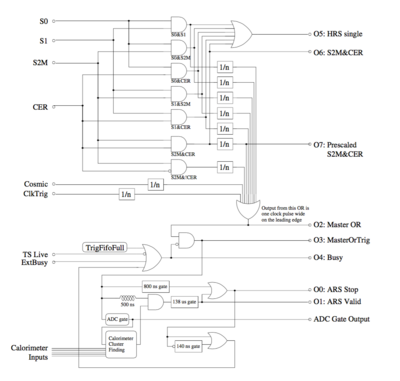 Trigger diagram for internal logic (reference) |
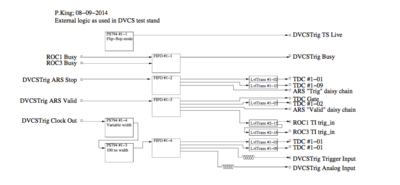 Trigger diagram for external logic (reference) |
Refer to DVCS_readiness_review_report.pdf
Relevant Terminology
- Scalars - two types of scalars, internal and external to the trigger or detector. For each set of internal and external set of scalars, there are corresponding live and raw scalars. The livetime is then the ratio of the live scalar to raw scalar.
- External Scalars (list borrowed from here). Note that blank spaces after numbers means that those channels were not being used. These scalers correspond to the prefix "gated_accum_dvcs_xx" or "accum_dvcs_xx" in the root trees where "gated_accum_dvcs_xx" are the live rates, and the "accum_dvcs_xx" are the raw rates.
- 512ns clock from DVCS trigger crate (1)
- DVCS cosmic trigger
- s0
- s2
- CER
- EDTM
- DVCS external clock or LED trigger
- ARS_stop
- ARS_valid
- DVCS calorimeter ADC_gate
- inverted S0
- inverted S2
- inverted CER
- L1A
- CaloBlock001
- External S2M_CER
- 64ns clock from DVCS trigger crate
- 512ns clock from DVCS trigger crate (2)
- Master_OR
- Master_OR_Live
- HRS_Single
- S2M_CER
- S2M_CER_Scaled
- 103kHz clock from spectrometer
- BCM signal
- Internal Scalers - "cpt" prefix, to be distinguished from the external scalers.
- Beam Current Monitor (BCM) - works to measure a stable and non-interfering beam current measurement.
- Beam Position Monitor (BPM) - used to determine the position and direction of beam at the target.
- Analog Ring Sampler (ARS) - consists of an array of capacitor cells that work to sample the signals coming from PMTs by storing them. Stop and valid signals are the two signals that control the behavior of the ARS. The valid signal instructs the charge of each capicitor to be digitized, and the stop signal instructs the ARS to stop sampling, which occurs when all the capicitor cells are in a "hold" state, or isolated state. The valid signals correspond to the ARS Valid Rate, which is used as the trigger rate in the calculation of the deadtime.
- S2M&&CER - S2M and Cherenkov gas detectors are used in conjunction to form a trigger for a DVCS event, which is why we use these detectors to calculate the deadtime. When this trigger is formed, a signal is sent to the Master OR live and then to the ARS which sends an ARS valid signal. See above for more trigger information.
Scaler raw and live rates, and Livetime
Below are tables that show different raw and live rates of important scalers influencing the deadtime computation.
| I (uA) | S2M (Hz) | S0 (Hz) | S2M & Cherenkov (Hz) | Master OR (Hz) |
|---|---|---|---|---|
| 0 | 212 | 101.8 | 13.9 | 23.4 |
| 10.61 | 6494 | 2074 | 137 | 145.8 |
| 15.32 | 9262 | 2960 | 200 | 214 |
| 20.53 | 12350 | 3927 | 273 | 288.5 |
| I (uA) | S2M (Hz) | S0 (Hz) | S2M & Cherenkov (Hz) | Master OR (Hz) |
|---|---|---|---|---|
| 0 | ||||
| 10.61 | 6394 | 2040 | 134.6 | 143.3 |
| 15.32 | 9041 | 2885 | 194.6 | 208.1 |
| 20.53 | 11920 | 3783 | 262.9 | 277.9 |
| I (uA) | S2M LT | S0 LT | S2M & Cherenkov LT | Master OR LT |
|---|---|---|---|---|
| 0 | 0.997 | 0.998 | 0.997 | 0.999 |
| 10.61 | 0.985 | 0.984 | 0.983 | 0.983 |
| 15.32 | 0.976 | 0.975 | 0.973 | 0.972 |
| 20.53 | 0.965 | 0.963 | 0.963 | 0.963 |
"Random" counting scalers were brought to attention due to S2m&&Cer live scaler not counting the same way as the ARS valid scaler. There is now a solution of why they do not count the same way: S2m&&Cer signals are not validated by the ARS after forming a trigger. However, to make sure the scalers are counting correctly, the ARS stop and Master OR Live were checked and they do count the same way. Below are plots showing the results of this check e.g. showing how each scaler counts from one entry to the next. Notice that ARS Stop and Master OR count/increment the same way, and ARS Valid and S2m&&Cer do not do so.
Current Dependence Studies
Taking raw rates and normalizing them with the current (Hz/uA), and subtracting the pedestal (taken during a run when there was no current, specifically run 13402).
| I (uA) | S2M (Hz/uA) | S0 (Hz/uA) | S2M & Cherenkov (Hz/uA) | Master OR (Hz/uA) |
|---|---|---|---|---|
| 0 | 212 Hz (raw) | 101.8 Hz (raw) | 13.9 Hz (raw) | 23.4 Hz (raw) |
| 10.61 | 592 | 186 | 11.6 | 11.5 |
| 15.32 | 591 | 187 | 12.1 | 12.4 |
| 20.53 | 591 | 186 | 12.6 | 12.9 |
Real Coincidences: CODA event-based rates
Since there was still a current dependence still apparent despite current normalized raw rates, we decided to look at the full CODA event-based rates and applied appropriate electron and tracking cuts...
| I (uA) | S2M&&CER LT | Rate (Hz/uA): no cuts | Rate (Hz/uA): tracking cuts | Rate (Hz/uA): tracking&TDC cuts | Rate (Hz/uA): tracking&TDC&Cer cuts | Rate (Hz/uA): tracking&TDC&Cer&DIS cuts | tracking&TDC&Cer&DIS/S2M&CER LT |
|---|---|---|---|---|---|---|---|
| 0 | n/a | 16.26 | 0.150 | 0.150 | 0.030 | n/a | |
| 10.61 | 0.985 | 9.27 | 5.783 | 5.719 | 5.138 | 3.365 | 3.422 |
| 15.32 | 0.976 | 10.26 | 6.192 | 6.117 | 5.484 | 3.356 | 3.450 |
| 20.53 | 0.965 | 11.26 | 6.459 | 6.391 | 5.733 | 3.321 | 3.449 |
| I (uA) | S2M&&CER LT | Rate (Hz/uA): no cuts | Rate (Hz/uA): tracking cuts | Rate (Hz/uA): tracking&TDC cuts | Rate (Hz/uA): tracking&TDC&Cer cuts | Rate (Hz/uA): tracking&TDC&Cer&DVCS cuts | tracking&TDC&Cer&DVCS/S2M&CER LT |
|---|---|---|---|---|---|---|---|
| 0 | n/a | 16.26 | 0.150 | 0.150 | 0.030 | n/a | |
| 10.61 | 0.985 | 9.27 | 5.783 | 5.719 | 5.138 | 5.134 | 5.212 |
| 15.32 | 0.976 | 10.26 | 6.192 | 6.117 | 5.484 | 5.480 | 5.615 |
| 20.53 | 0.965 | 11.26 | 6.459 | 6.391 | 5.733 | 5.728 | 5.936 |
The two tables above are shown for comparison purposes, main difference between the two being the DIS and DVCS rates. DIS rates were calculated using a variable called "TriggerPatternWord&0x00080". Table 2 shows that although the DIS current dependence vanishes when normalizing with the current, the DVCS-rate current dependence remains as shown on Table 3. The DIS rates do not tell us much since they represent electron triggers only, and do not take into account the calorimeter coincidences.
The DVCS rates were found by using "TriggerPatternWord&0x00100". The DVCS rates are still dependent on the current, as shown on Table 3. We think that this may be due to random coincidences between the DVCS calorimeter and the LHRS (S2M&&Cer).
Extraction of Accidentals
under construction
A waveform analysis technique has been employed to account for random coincidences or accidentals coming from the calorimeter by utilizing a calorimeter clustering algorithm. There are certain clusters in the calorimeter that can allow us to reconstruct the coincidence time of the events (photons) in the calorimeter. The time relative to the coincidences occurring in the calorimeter is an important factor to use this calorimeter clustering algorithm. Below are plots from the analysis, including "tmoy" which is the time distribution of the coincidences (accidental and true). We need to figure out how to distinguish the two by finding the range in which the accidentals are.
We have applied the same cuts to this time distribution (tmoy) as we did for the DVCS rates for TDC (tdcval[27]-tdcval[7]/10<24), tracking (ntr<0), cerenkov (cer>500), trigger pattern word(trigpatW&00100 ==256).
Plots from run 13418: dedicated deadtime analysis run
Important ELog Entries
- Mongi's ELog update: DVCS ELOG LOGIN REQUIRED on May 1, 2017
- Mongi's ELog update: DVCS ELOG LOGIN REQUIRED on May 21, 2017
- Logbook (ELOG) entry for 13418: JLAB CREDENTIALS REQUIRED
Past Updates and Progress
- The master OR issue- 8/5/2017 : The master OR, which is one of the scalers/counters for the S2M and Cherenkov detectors (the main detectors that were responsible for detecting DVCS events during the experiment), seems to have different live/raw scaler rates when comparing to CODA event-based rates. These should be the same, and we think that this happens because of random counting within the scalers. More info here.
- ***Update (8/22/17): this issue has been resolved since it makes sense that the Master OR has a slightly larger rate than the CODA event-based rate since the calorimeter inputs are included in the coincidences which go into the Master OR.
- ***Update (9/5/17): This may still be an issue since it is still not clear the source of the counting of scalers. Is this really "random" or just expected?
- ***Update (9/12/17): Suggested to check consistency with ARS Stop and Master OR live...and ARS valid and S2m && Cer live
- ***Update (9/20/17): Solved. ARS Stop and Master OR Live count the same, and ARS valid and S2m && Cer live should not. More details here.
- Current dependence issues (past updates)
- ***Update (8/22/17): Still a mystery. Account for the random coincidences between the calorimeter and S2m&&Cer by looking at singles rates with the HRS and the calorimeter, and/or finding a way to normalize the DVCS normalized rates with a dvcs livetime correction factor, and/or finding a way to subtract the DIS rates from DVCS rates which is maybe causing the current dependence.
- ***Update (8/23/17): Marco suggested to look at EDTM LT correction to apply to DVCS normalized rates instead of S2M&&Cer LT. Discrepancy of rates across currents decreases by 1%, but still at 11.4%. Perhaps move forward to account for random coincidences in calorimeter and correct rates.
- ***Update (9/5/17): Need to look at accidentals by analyzing waveform analyzed ntuples, and subtract from main coincidence peak. More details here.
- ***Update (9/24/17): Need to apply correction for signal/background ratio. Report on progress here.
- ***Update (11/10/17): Discussed with Paul King about correction factor. Think it is 80 ns. Need to adjust ratio by scaling to 80 ns. Need to contact Paul again to make sure it is 80 ns. Need to also gather plots of ARS/ADC as a function of time spectrum, and present in next DVCS-3 meeting.
References
- Munoz, Carlos. Ph.D. Deeply Virtual Compton Scattering in Hall A at Jefferson Lab. 2009.
- Roche, Munoz, et al. Measurements of the Electron-Helicity Dependent Cross Sections of Deeply Virtual Compton Scattering with CEBAF at 12 GeV. arXiv:nucl-ex/0609015. 2014.
- Defurne, Maxime. Ph.D. Photon and pi0 electroproduction at Jefferson Lab - Hall A. 2015.
- V. Breton. "A Clustering Algorithm for the LHCb electromagnetic calorimeter using Cellular Automaton." external link to webpage. 2001.
- Isreal, Norman. MS. Commissioning of the Trigger module for the 12 GeV era experiment E12-06-114 at JLab. 2014.
Acknowledgements
Thank you to Dr. Horn, Dr. Roche, Dr. Munoz, Marco Carmignotto, Mongi Dlamini for working with me, and guiding me through this project.
